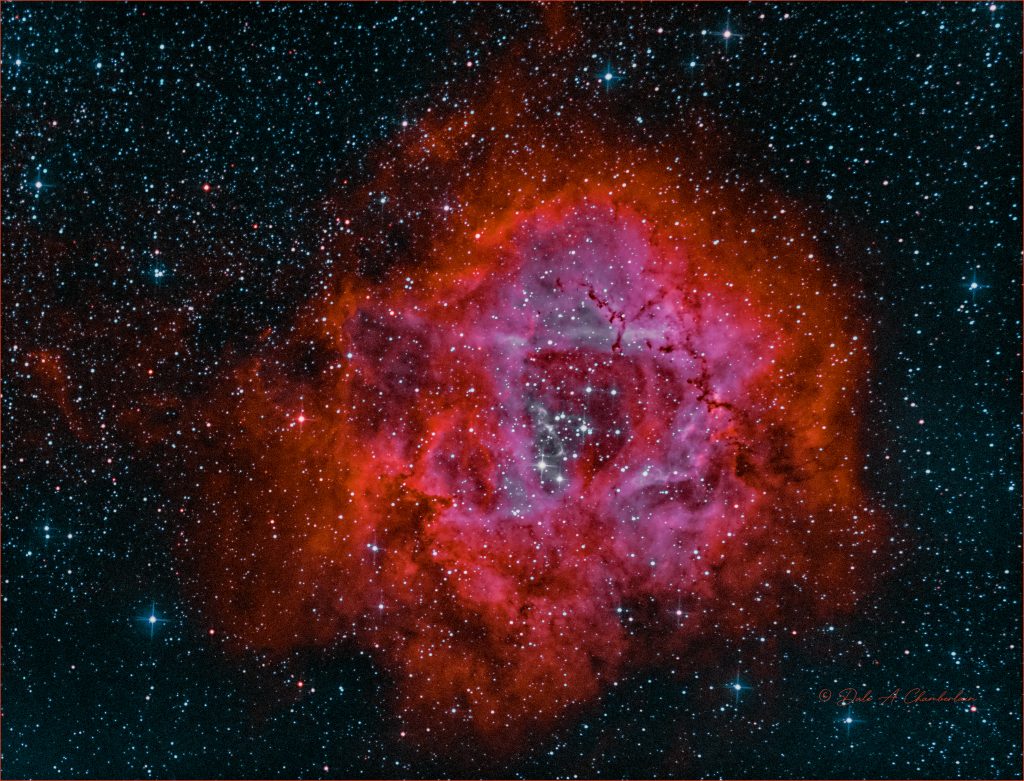
Object: The Rosette Nebula (also known as Caldwell 49) is a large spherical hydrogen II region (circular in appearance) located near one end of a giant molecular cloud in the Monoceros region of the Milky Way Galaxy. The open cluster NGC 2244 (Caldwell 50) is closely associated with the nebulosity, the stars of the cluster having been formed from the nebula’s matter.
The cluster and nebula lie at some 5,000 light-years from Earth and measure roughly 130 light years in diameter. The radiation from the young stars excites the atoms in the nebula, causing them to emit radiation themselves producing the emission nebula we see. The mass of the nebula is estimated to be around 10,000 solar masses.
A survey of the nebula with the Chandra X-ray Observatory has revealed the presence of numerous new-born stars inside optical Rosette Nebula and studded within a dense molecular cloud.
On April 16, 2019 the Oklahoma Legislature passed HB1292 making the Rosette Nebula as the official state astronomical object. Oklahoma Governor Kevin Stitt signed it into law April 22, 2019.
(Courtesy of Wikipedia)
Taken: February 1&2, 2020
Telescope: Skywatcher Esprit 80 ED Triplet APO Refractor
Mount: Paramount ME II unguided
Camera: ZWO ASI1600MM-Pro (cooled to -15C; unity gain) Bin 1×1.
Focuser: Starizona Micro Touch Autofocuser
Rotator: Optec Pixys LE camera field rotator
Filters used: Hydrogen-alpha, Oxygen-III and Sulphur-II on a ZWO 8 position filter wheel
Exposures: 34×300 sec.Hydrogen-alpha, 35×300 sec. Oxygen-III for a total exposure time of 5.75 hours; calibrated with 40 dark frames, 40 flat frames with 40 dark-flats
Palette: HOO (Clouds interrupted getting more data)
Seeing Conditions:
Processed with PixInsight and Photoshop CC 2019 (Weighted Batch Pre-processing script used for calibration, evaluation, registration and integration of subframes)